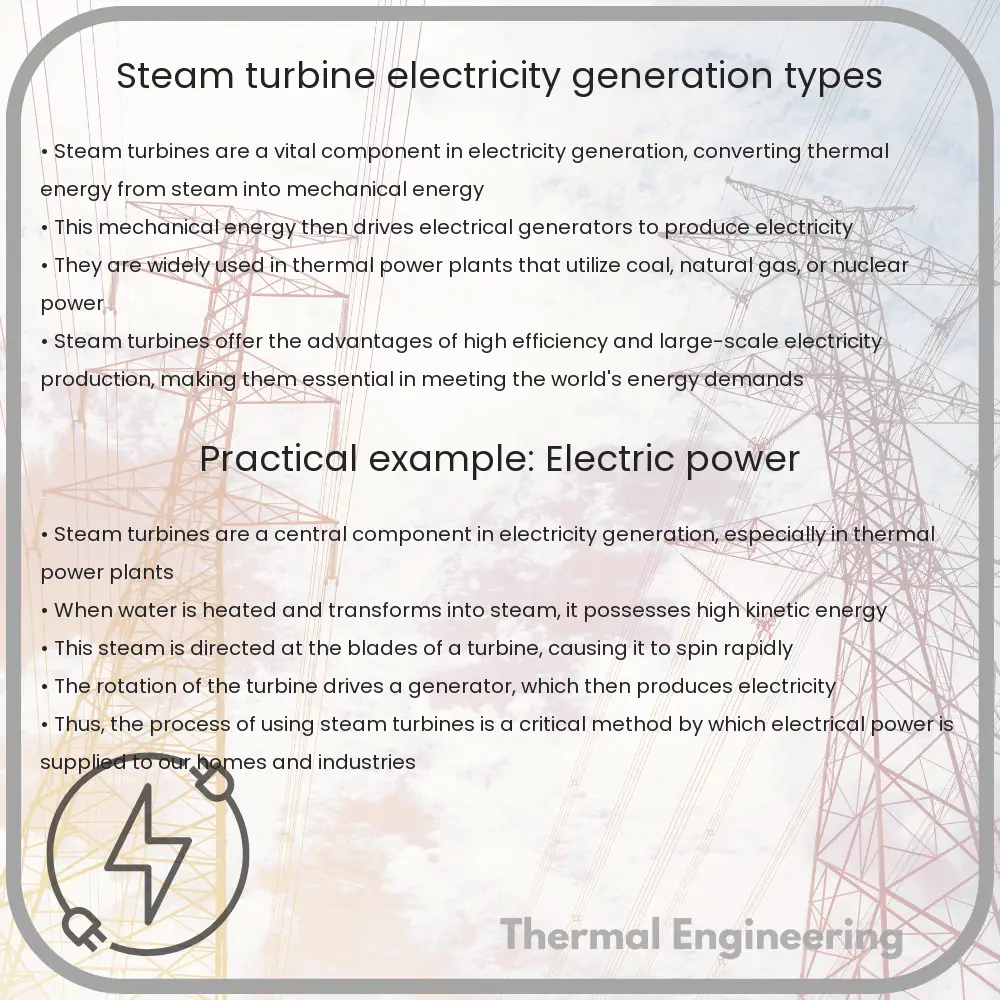Learn about steam turbines and their essential role in electricity generation, from basic workings and types to efficiency and future trends.

Understanding Steam Turbines in Electricity Generation
Steam turbines are a pivotal component in the production of electricity in power plants across the globe. From generating base-load power in nuclear stations to providing critical backup in renewable energy setups, steam turbines play a crucial role in the efficient and reliable production of electricity.
How Steam Turbines Work
A steam turbine converts thermal energy from steam into mechanical energy, which in turn generates electrical energy through a generator. The steam turbine operates on the basic principles of high-pressure steam directed onto blades mounted on a shaft. This steam causes the shaft to spin at high speeds. A generator connected to this shaft converts mechanical energy into electrical energy through electromagnetic induction.
- Process: High-pressure steam is produced in a boiler where water is heated to its boiling point and beyond under controlled conditions. This steam is then directed to the turbine’s blades.
- Energy Conversion: As the steam hits the turbine blades, it expands and cools, causing the turbine to spin. The kinetic energy from this spinning is what is ultimately used to power the generator.
- Output: The generator converts the mechanical spinning motion of the turbine into electrical energy using magnetic fields. This electricity is then transported through power lines for various uses.
Types of Electricity Generation Involving Steam Turbines
Steam turbines are versatile and can be employed within various types of power plants, each using different fuel sources to produce steam:
- Coal-Fired Power Plants: Coal is burned to heat water in a boiler, producing steam.
- Nuclear Power Stations: Nuclear fission generates heat to produce steam from water, without combustion.
- Combined-Cycle Gas Turbine Plants: In these plants, gas turbines generate electricity and the waste heat from this process is used to generate additional steam and electricity via a steam turbine.
- Concentrated Solar Power Plants: These use the sun’s heat (not its light) to produce steam, which then drives a steam turbine. They are distinct from photovoltaic cells which convert sunlight directly into electricity.
- Biomass Power Plants: Organic materials are burned to boil water and produce steam, similar to coal-fired power plants.
Efficiency and Future Trends
The efficiency of steam turbines has improved significantly over the years through technological advancements. Modern high-performance steam turbines can convert up to around 35% to 48% of the thermal energy into electrical energy. Continuous improvements are expected as technologies evolve towards higher temperatures and pressures, furthering their thermodynamic efficiency.
Looking ahead, the integration of steam turbines with renewable energy sources and the advancement of materials to withstand higher temperatures and pressures are key areas of development. This aligns with global efforts to reduce carbon emissions and shift towards more sustainable energy systems.
Steam turbines will continue to be a major part of global electricity generation, serving as a reliable and efficient technology in both conventional and emerging renewable energy power plants. Their capability to handle large-scale electricity demands makes them indispensable in our ongoing energy transition.